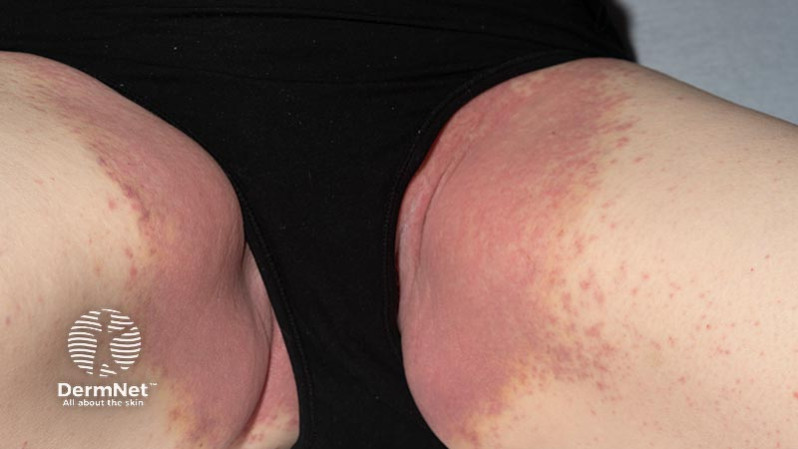Main menu
Common skin conditions

NEWS
Join DermNet PRO
Read more
Quick links
Author(s): Dr Stanley Leong, Dermatology and Paediatric Registrar, New Zealand (2024)
Reviewing dermatologist: Dr Ian Coulson (2024)
Edited by the DermNet content department

A 60-year-old woman on chemotherapy for acute myeloid leukaemia (AML) presented with fever of unknown origin. She was started on IV piperacillin/tazobactam for febrile neutropenia. She developed a rash over her major body folds 2 days following commencement of the antibiotic.
She described pain and a burning sensation associated with the rash, but no itching.
On examination, she looked well. Her skin was not erythrodermic. She had confluent erythematous maculopapular plaques over her natal cleft, upper inner thighs, axillae, and neck. There were no pustules, vesicles, bullae, petechiae, or oral mucosal lesions.
This is likely to be symmetrical drug-related intertriginous and flexural exanthema (SDRIFE). It is an adverse drug eruption, commonly caused by beta-lactam antibiotics (penicillin, amoxicillin, or cephalosporins). Its previous name is “baboon syndrome”, as the eruption usually causes symmetrical erythema perianally and onto the buttocks resembling a baboon’s rump.
SDRIFE is a clinical diagnosis.
It is a benign, self-limiting reaction that resolves when the offending drug is withdrawn. It will recur on re-exposure to the causative drug.
SDRIFE occurs within hours to days after exposure to the causative drug. It generally manifests as well-defined redness of the buttocks, natal cleft, and upper inner thighs. The redness is usually symmetrical. Other major body folds such as axillae and neck may also be affected.
The key feature of SDRIFE is the lack of systemic symptoms; patients are typically otherwise well.